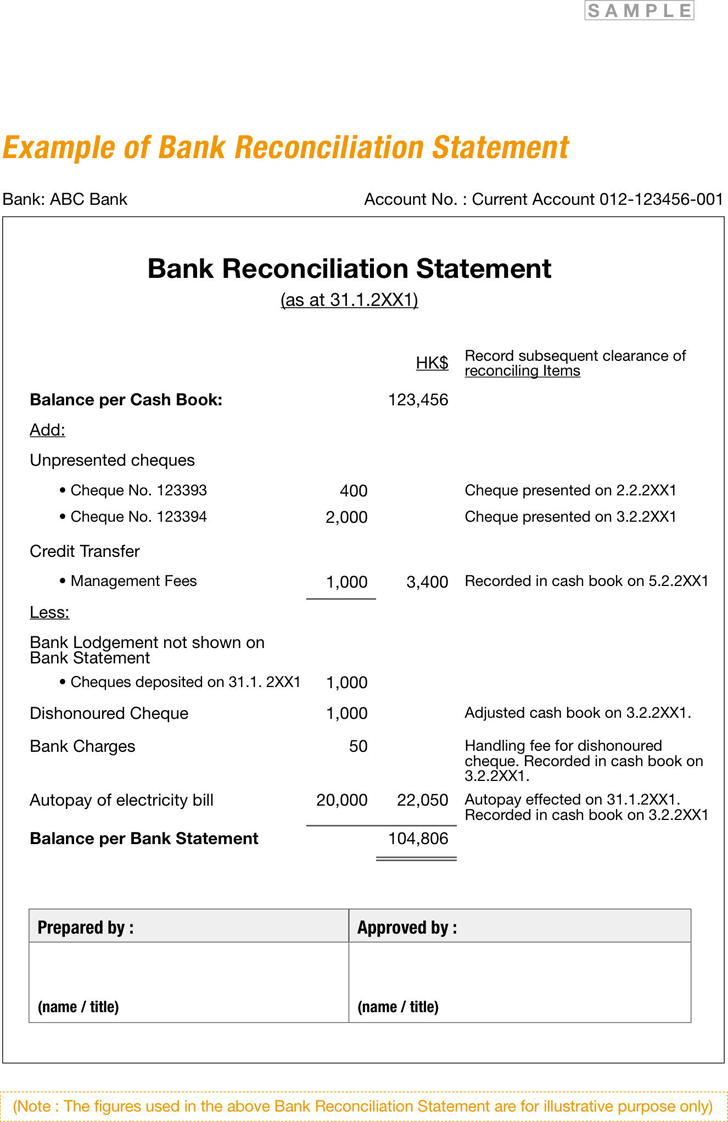
Or if a debtor has paid you via check and you’ve credited the account, but the receivable isn’t reflected yet in the bank statement. An expense or a sale may have been overlooked and not added to the ledger, causing a balance difference between the book and the bank statement. When the amounts aren’t equal, you’ll need to verify the numbers, fix any errors, and repeat the reconciliation process to find out where the discrepancy is. After you have compared the deposits and withdrawals, determine any missing transactions.
Why You Can Trust Finance Strategists
As such, exact amounts may not be accurately included on financial statements before the reconciliation process. When the business receives its bank statement, it can use the final amounts of interest and investment income to make adjustments and reconcile its financial statements. Before sitting down to reconcile your business and bank records, gather your company ledger and the current and previous bank statements. You can get a template online to use for your bank reconciliation statement, or you can use a spreadsheet. If you’re using accounting software, it may give you the option to connect your bank account so transactions are automatically downloaded and categorized. This can save you some time, although it’s important to periodically check everything manually to ensure its accuracy and that there are no bank errors.

Ensures Financial Accuracy and Cash Flow
As a result, bank transactions can be automatically imported into an accounting software, where one is able to categorize and match a large number of transactions with one click of a button. This significantly reduces the effort that goes into the reconciliation process and enables businesses to verify their cash balances anytime throughout the month. Theoretically, the transactions listed on a business’ bank statement should be identical to those that appear in the accounting records of the business, with matching what’s the difference between a credit memo credit and a refund ending cash balances on any given day. A bank reconciliation statement is a summary that shows the process of reconciling an organization’s bank account records with the bank statement. It lists the items that make up the differences between the bank statement balance and the accounting system balance, and explains how these differences were resolved. Infrequent reconciliations make it difficult to address problems with fraud or errors when they first arise, as the needed information may not be readily available.
How We Make Money
The reason could be that deposits are in transit or outstanding checks have not yet been reflected. Bank provides various services to its depositors such as printing checks, processing NSF checks and collecting notes receivables etc. Bank usually deducts charges from depositor’s account for such services and intimates him or her about these deductions by issuing a debit memorandum. Find if there exists any debit memorandum that have not been recorded in your accounting record. Banks provide various services to its customers and deduct service charges from their accounts. These charges create a difference of balance between bank statement and the balance as per depositor’s record.
- If you haven’t been using bank reconciliation statements, now is the best time to start.
- If the bank has added legitimate entries, you need to make adjustments in your books so the two reflect the same transactions.
- The bank statement is reconciled when the adjusted cash balance as per bank equals the adjusted cash balance as per company books.
A bank reconciliation reconciles the bank statement with the company’s bank account records. A bank reconciliation consists of a business’s deposits, withdrawals, expenses, and other activities directly impacting your bank account during a particular period. The purpose of this comparing and matching process is to ensure that discrepancies are identified and corrected. In the absence of proper bank reconciliation, the cash balances in your bank accounts could be much lower than expected, which may result in bounced checks or overdraft fees. A bank reconciliation statement is a document prepared by a company that shows its recorded bank account balance matches the balance the bank lists.
Using this simple process each month will help you uncover any differences between your records and what shows up on your bank statement. You received $800 from Mr. Y (one of your debtors) on January 31, 2021 and recorded it immediately in your accounting records. You then sent this cash to your bank to be deposited into your account but it reached too late to be entered in your bank statement for the month of January. The balance in your accounting record would be different from your bank statement. As a result, the bank statement balance will be lower than the cash book balance, so the difference will need to be adjusted in your cash book before preparing the bank reconciliation statement. Income from variable sources like interest and investment may be difficult to predict.
The process also enables the company to record any interest payments the account has earned or fees the bank has charged. You should perform monthly bank reconciliations so you can better manage your cash flow and understand your true cash position. Read on to learn about bank reconciliations, use cases, and common errors to look for.
Generally speaking, bank reconciliations should be completed on a monthly basis to ensure accuracy and timely updates. For any reconciling items appearing in the book section, a journal entry should be recorded to adjust the cash account to the correct balance. When done frequently, reconciliation statements help companies identify cash flow errors, present accurate information to investors, and plan and pay taxes correctly.








